En este artículo nos gustaría mostrar cómo construir una caja fuerte IOT con teclado o bloqueo RFID. El siguiente vídeo es la instrucción. Proporcionamos información adicional a través de la entrada del blog.
Aquí encontrará los productos utilizados:
- ESP32 D1 Mini (https://www.az-delivery.de/products/e...)
- Módulo reductor CC-CC LM2596S (https://www.az-delivery.de/products/l...)
- 5V Anillo LED WS2812B (https://www.az-delivery.de/products/r...)
- Servomotor MG995 (https://www.az-delivery.de/products/a...)
- Teclado Matrix 4x4 (https://www.az-delivery.de/products/4...)
- Kit RFID RC522 (incluye lector, chip y tarjeta) (https://www.az-delivery.de/products/r...)
Cableado del teclado:

Teclado de códigos:
/* ___ _____ ____ ___ / /__ / / __ \___ / (_) _____ _______ __ / /| | / / ______/ / / / _ \/ / / | / / _ \/ ___/ / / / / ___ |/ /_/_____/ /_/ / __/ / /| |/ / __/ / / /_/ / /_/ |_/____/ /_____/\___/_/_/ |___/\___/_/ \__, / /____/ Producto, hoja de datos y pinout en: https://www.az-delivery.de/ Proyecto: Caja fuerte con teclado e iluminación interior Fecha: 10/2022 Control de teclado del sketch de ejemplo de la librería de Chris--A: https://github.com/Chris--A/Keypad/blob/master/examples/CustomKeypad/CustomKeypad.ino
*/ #include <Arduino.h> #include <ESP32Servo.h> #include <SPI.h> // #include <MFRC522.h> #include <fastLED.h> #include <Keypad.h> // motor const int servoPin = 2; Servo myservo; // leds const int NUM_LEDS = 12; const int DATA_PIN = 25; CRGB leds[NUM_LEDS]; int randomRed = 0; int randomGreen = 0; int randomBlue = 0; const int LEDRed = 4; bool dooropen = false; // Keypad const byte ROWS = 4; // four rows const byte COLUMNS = 4; // four columns // define the symbols on the buttons of the keypads char hexaKeys[ROWS][COLUMNS] = { {'1', '2', '3', 'A'}, {'4', '5', '6', 'B'}, {'7', '8', '9', 'C'}, {'*', '0', '#', 'D'}}; byte rowPins[ROWS] = {16, 17, 21, 22}; // connect to the row pinouts of the keypad byte colPins[COLUMNS] = {26, 18, 19, 23}; // connect to the column pinouts of the keypad Keypad keypad = Keypad(makeKeymap(hexaKeys), rowPins, colPins, ROWS, COLUMNS); const String password = "1234"; // change your password here String input_password; void setup() { Serial.begin(115200); pinMode(LEDRed, OUTPUT); myservo.attach(servoPin); FastLED.addLeds<WS2812, DATA_PIN, GRB>(leds, NUM_LEDS); input_password.reserve(32); // maximum input characters is 33, change if needed } void loop() { char key = keypad.getKey(); if (key) { Serial.println(key); if (key == '#') { if (password == input_password) { Serial.println(" Password is correct"); if (dooropen) { myservo.write(90); // move MG996R's shaft to angle 0° for (int i = 0; i < NUM_LEDS; i++) { leds[i].setRGB(0, 0, 0); // leds off } FastLED.setBrightness(20); FastLED.show(); dooropen = false; delay(1000); } else if (dooropen == false) { myservo.write(0); // move MG996R's shaft to angle 90° randomRed = random(1, 256); randomBlue = random(1, 256); randomGreen = random(1, 256); for (int i = 0; i < NUM_LEDS; i++) { leds[i].setRGB(randomRed, randomGreen, randomBlue); // leds on with random colours } FastLED.setBrightness(20); FastLED.show(); dooropen = true; delay(1000); } } else { digitalWrite(LEDRed, HIGH); delay(1000); digitalWrite(LEDRed, LOW); } input_password = ""; // clear input password } else if (key == '*') { input_password = ""; // clear input password } else { input_password += key; // append new character to input password string } } }
Cableado RFID:

Código RFID:
/* ___ _____ ____ ___ / /__ / / __ \___ / (_) _____ _______ __ / /| | / / ______/ / / / _ \/ / / | / / _ \/ ___/ / / / / ___ |/ /_/_____/ /_/ / __/ / /| |/ / __/ / / /_/ / /_/ |_/____/ /_____/\___/_/_/ |___/\___/_/ \__, / /____/ Producto, hoja de datos y pinout en: https://www.az-delivery.de/ Proyecto: Caja fuerte con RFID y conexión Node-RED mediante MQTT Fecha: 10/2022
*/ #include <Arduino.h> #include <ESP32Servo.h> #include <SPI.h> #include <MFRC522.h> #include <fastLED.h> // for MQTT #include <PubSubClient.h> #include <WiFi.h> //für etwaigen späteren Gebrauch für MQTT etc. #include <ArduinoJson.h> #include <AsyncTCP.h> #include "credentials.h" // MQTT String clientId = "ESP32-"; const char *mqtt_server = "192.168.178.42"; const char *mqtt_user = "azdelivery"; const char *mqtt_password = "myhiddenpassword"; WiFiClient espClient; PubSubClient client(espClient); long lastMsg = 0; char msg[50]; int value = 0; // RFID const int SS_PIN = 5; const int RST_PIN = 27; MFRC522 rfid(SS_PIN, RST_PIN); // motor const int servoPin = 2; Servo myservo; // leds const int NUM_LEDS = 12; const int DATA_PIN = 25; CRGB leds[NUM_LEDS]; int randomRed = 0; int randomGreen = 0; int randomBlue = 0; const int LEDRed = 4; bool dooropen = false; void reconnect() { // Loop until we're reconnected while (!client.connected()) { Serial.print("Attempting MQTT connection..."); // Attempt to connect clientId += String(random(0xffff), HEX); if (client.connect(clientId.c_str(), mqtt_user, mqtt_password)) { Serial.println("connected"); // for this example not necessary // client.subscribe("topic"); } else { Serial.print("failed, rc="); Serial.print(client.state()); Serial.println(" try again in 5 seconds"); // Wait 5 seconds before retrying delay(5000); } } } // only required if we get informations from mqtt void callback(char *topic, byte *message, unsigned int length) { Serial.print("Message arrived on topic: "); Serial.print(topic); Serial.print(". Message: "); String messageTemp; for (int i = 0; i < length; i++) { Serial.print((char)message[i]); messageTemp += (char)message[i]; } Serial.println(); if (String(topic) == "topic") { // action } } void connectAP() { Serial.println("Connecting to WiFi.."); WiFi.begin(ssid, password); int cnt = 0; while (WiFi.status() != WL_CONNECTED) { delay(1000); Serial.print("."); cnt++; if (cnt > 30) ESP.restart(); } Serial.println(WiFi.localIP()); } void setup() { Serial.begin(115200); pinMode(LEDRed, OUTPUT); SPI.begin(); // start SPI bus rfid.PCD_Init(); // start RFID-Modul Serial.println("RFID-RC522 ist bereit"); myservo.attach(servoPin); FastLED.addLeds<WS2812, DATA_PIN, GRB>(leds, NUM_LEDS); connectAP(); client.setServer(mqtt_server, 1883); client.setCallback(callback); } void loop() { if (!client.connected()) { reconnect(); } if (!client.loop()) client.connect("ESP32Tresor"); if (!rfid.PICC_IsNewCardPresent()) { return; } if (!rfid.PICC_ReadCardSerial()) { return; } Serial.println(); // read the RFID-tags Serial.print(" UID tag :"); String content = ""; for (byte i = 0; i < rfid.uid.size; i++) { Serial.print(rfid.uid.uidByte[i] < 0x10 ? " 0" : " "); Serial.print(rfid.uid.uidByte[i], HEX); content.concat(String(rfid.uid.uidByte[i] < 0x10 ? " 0" : " ")); content.concat(String(rfid.uid.uidByte[i], HEX)); } content.toUpperCase(); Serial.println(); Serial.print(" PICC type: "); MFRC522::PICC_Type piccType = rfid.PICC_GetType(rfid.uid.sak); // the returned hex-value can be used for further actions Serial.println(rfid.PICC_GetTypeName(piccType)); if (content.substring(1) == "AC 32 E6 8C") { if (dooropen) { myservo.write(90); // move MG996R's shaft to angle 0° for (int i = 0; i < NUM_LEDS; i++) { leds[i].setRGB(0, 0, 0); // leds off } FastLED.setBrightness(50); FastLED.show(); dooropen = false; delay(1000); } else if (dooropen == false) { myservo.write(0); // move MG996R's shaft to angle 90° randomRed = random(1, 256); randomBlue = random(1, 256); randomGreen = random(1, 256); for (int i = 0; i < NUM_LEDS; i++) { leds[i].setRGB(randomRed, randomGreen, randomBlue); // leds on with random colours } FastLED.setBrightness(50); FastLED.show(); client.publish("safe", "Your safe has been opened"); // E-Mail dooropen = true; delay(1000); } } else { digitalWrite(LEDRed, HIGH); delay(1000); digitalWrite(LEDRed, LOW); delay(1000); } }
Credenciales para esto:
const char* ssid = "myhiddenSSID";
const char* password = "mytopsecreitpassword";
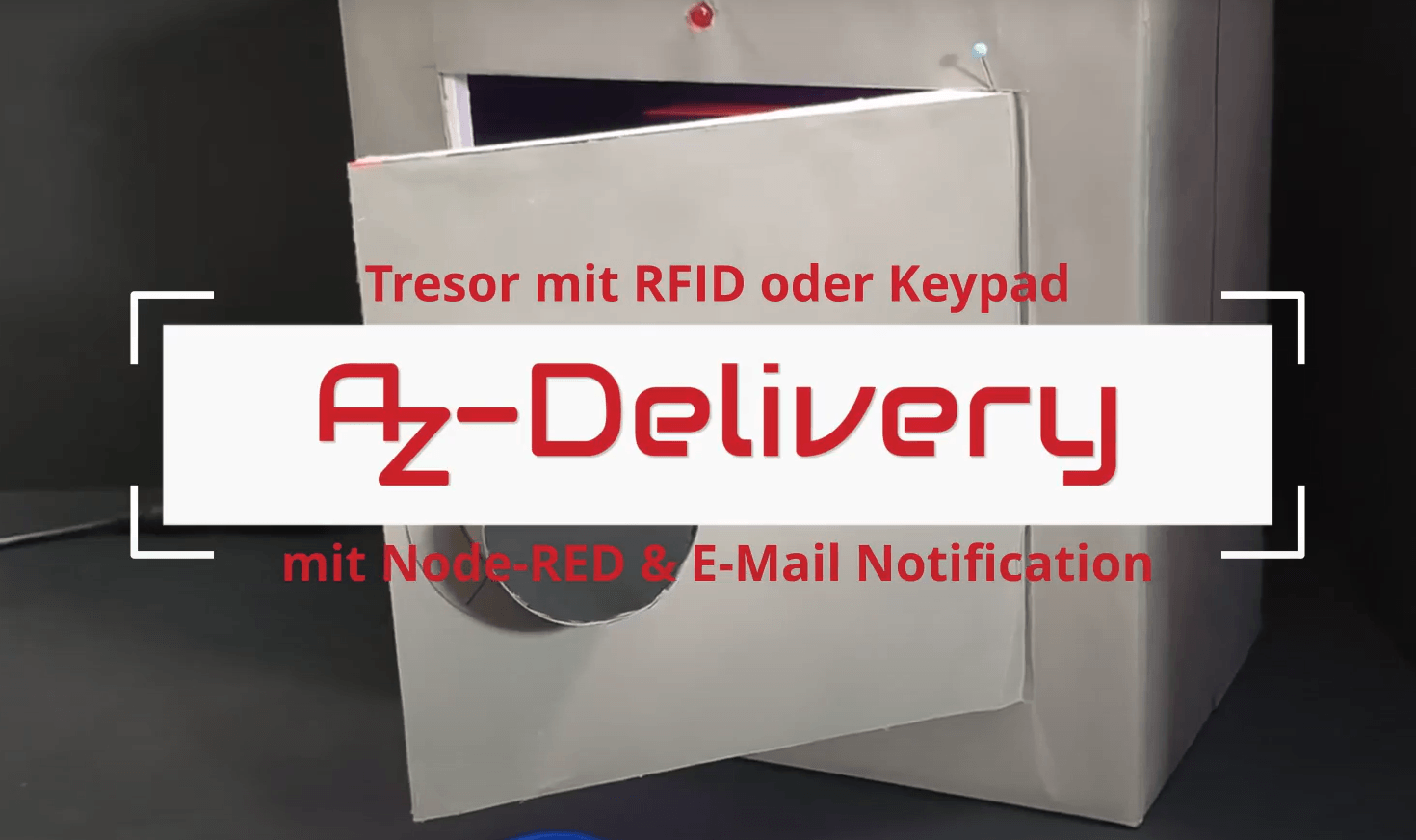
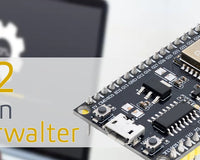


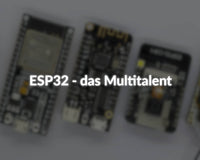




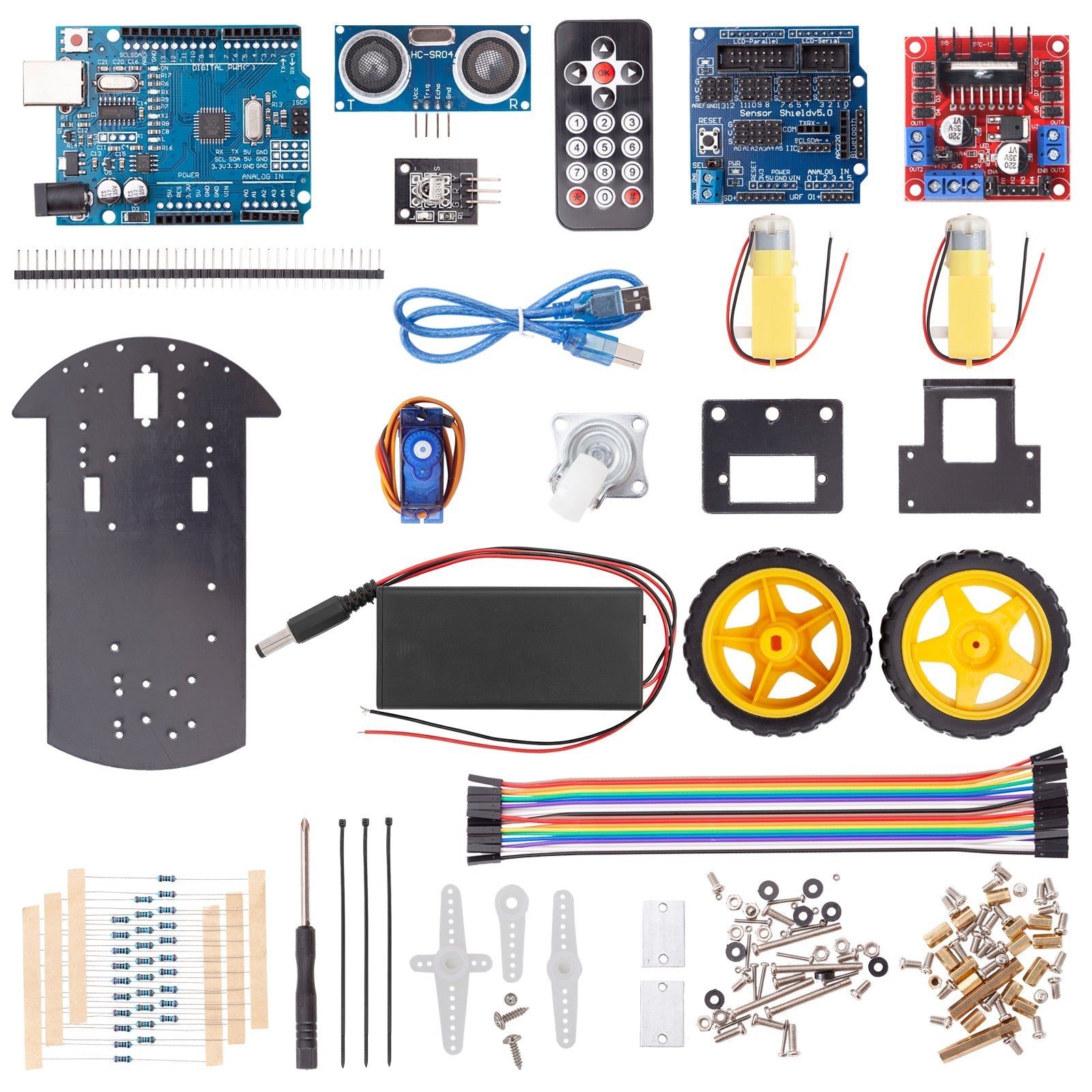
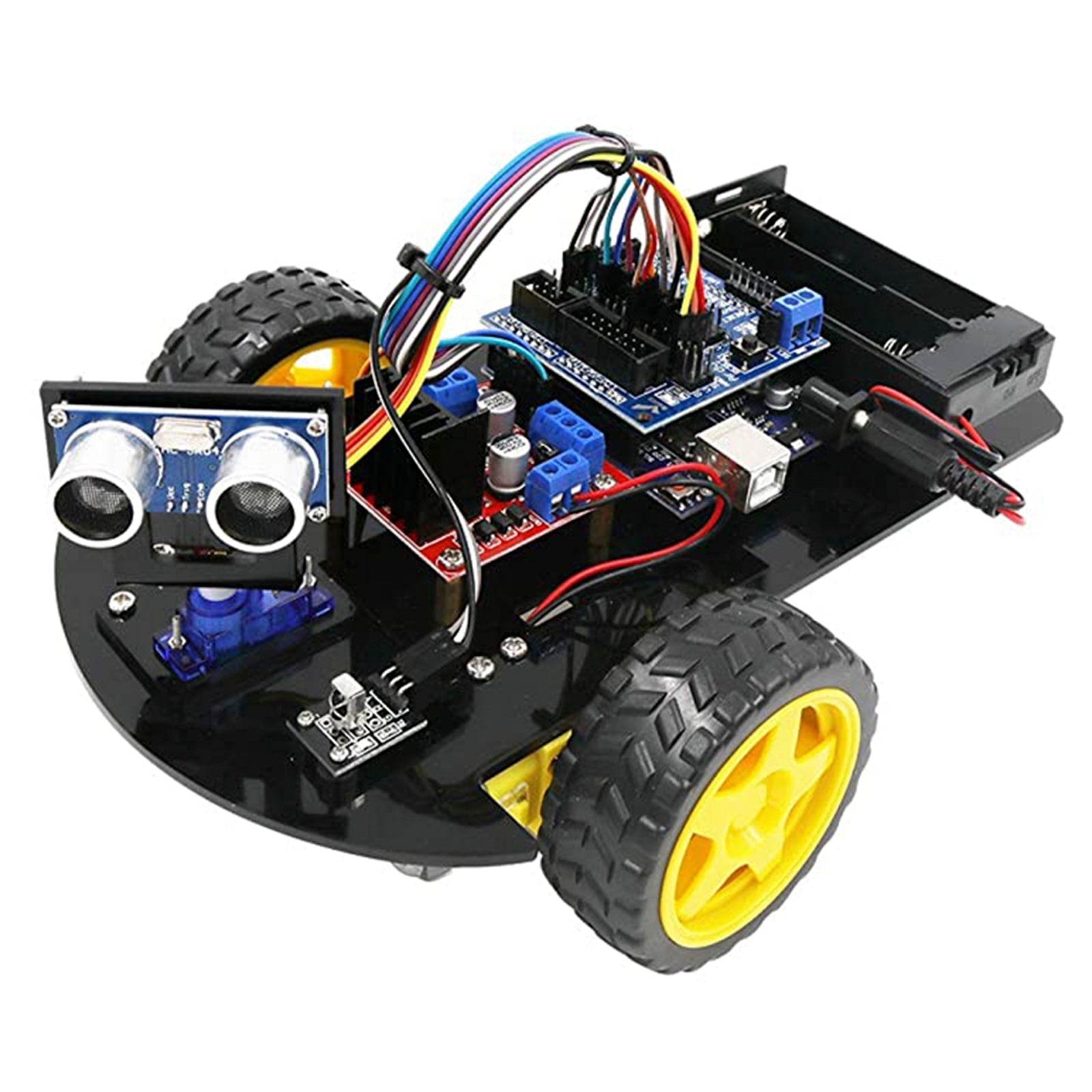
9 comentarios
Andreas Wolter
@Christof: es muss im gleichen Verzeichnis eine credentials.h liegen. Dort werden diese beiden Variablen deklariert und definiert. Sie wird in den Sketch inkludiert. Man kann die beiden Zeilen auch direkt in den oberen Teil eintragen und die credentials.h weglassen. Dann muss die include-Zeile dazu entfernt werden.
Grüße,
Andreas Wolter
AZ-Delivery Blog
Christof
Was mache ich mit den beiden letzen Zeilen
const char* ssid = “myhiddenSSID”;
const char* password = “mytopsecreitpassword”;
Bekomme immer den Scriptfehler:
"Nicht benutzt: C:\Program Files (x86)\Arduino\libraries\WiFi
exit status 1
credentials.h: No such file or directory
"
Anja
Klingt spannend als Bastelprojekt z.B. für eine Paket-Einwurfbox aus Sperrholz. Ein magnetischer Türöffner wäre eigentlich praktischer (dann muss man nicht aktiv verriegeln) aber das dürfte dann wieder eine Challenge sein weil die Dinger trotz Schutzdioden Spannungsspitzen erzeugen. Da braucht man dann dicke Kondensatoren die direkt verkabelt sein müssen – über die dünnen Steckkabel und Breadboard Verbindungen reicht das nicht.
Andreas Wolter
@Renato Pleterski: da die Anzahl der Pins dieses Mikrocontrollers stark eingeschränkt ist, denke ich, dass man die beiden Projekte nicht zusammenbringen kann. Beide nutzen die SPI-Schnittstelle. Wenn ein MC mit mehr Pins verwendet wird, bräuchte der entweder eine zweite Hardware SPI-Schnittstelle, oder man implementiert eine Software-SPI.
Grüße,
Andreas Wolter
AZ-Delivery Blog
Renato Pleterski
Kann man beide projekte : Keyboard und Rfid in eine Schaltung zusamen verbinden ?
Roland B.
Ich kann dem ersten Kommentar nicht beipflichten. Es geht hier um eine Bastelidee und die Ansteuerung der Module als IOT: Die Idee mit dem E-Mail Node gefällt und hat mir eine Idee aufgezeigt. Den Bastel Tresor als praxis Tresor anzusehen ist auch etwas vermessen.
Schönes basteln noch
Tobias
@ Paul Moranduzzo: Du brauchst die FastLED Bibliothek von Daniel Garcia.
Paul Moranduzzo
Fehlermeldung: fastLED.h No such file or directory
Welche Bibliothek soll ich nehmen?
dd1uzu
Sieht “interessant” aus. Ein Tresor aus Pappe!!!
1. Frage: Wie soll ich den schweren Metallriegel oder die Sperre eines ECHTEN Tresors mit dem Servo verbinden?
2. Frage: Wie soll das RFIF-Signal durch die dicke Tresorwand aus Metall kommen?
Wenn man statt des Servos ein Relais verwendet, ließe sich ein elektrischer Türöffner damit bauen. Das wäre sicher praxisnäher!
Bei Nutzung der WIFI- oder Bluetooth-Funktion des ESP könnte man alternativ auch eine drahtlose Fernbedienung realisieren.